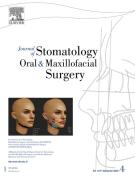Mandibular reconstruction after post-traumatic complex fracture: Comparison analysis between traditional and virtually planned surgery - 05/09/24
 , Gianluca Renato De Fazio a, Umberto Committeri a, b, Raffaele Spinelli a, Maria Nocera a, Emanuele Carraturo a, Giovanni Salzano a, Antonio Arena a, Vincenzo Abbate a, Paola Bonavolontà a, Antonio Romano a, Giovanni Dell'Aversana Orabona a, Luigi Angelo Vaira c, Pasquale Piombino a, d
, Gianluca Renato De Fazio a, Umberto Committeri a, b, Raffaele Spinelli a, Maria Nocera a, Emanuele Carraturo a, Giovanni Salzano a, Antonio Arena a, Vincenzo Abbate a, Paola Bonavolontà a, Antonio Romano a, Giovanni Dell'Aversana Orabona a, Luigi Angelo Vaira c, Pasquale Piombino a, dCet article a été publié dans un numéro de la revue, cliquez ici pour y accéder
Abstract |
Background |
Jaw reconstruction after complex post-traumatic fracture is still a challenge for surgeons using traditional surgery. Virtual surgical planning has proven to be a valid tool for managing these fractures. The aim of this study is to quantitatively evaluate the VSP effectiveness compared to traditional surgery in the management of complex mandibular fractures.
Methods |
30 patients with diagnosis of complex mandibular fracture were enrolled and divided in two groups: Group A (virtually planned surgery), The plate was pre-modeled and employed during the surgery; Group B (traditional surgery), the plate was shaped directly during the surgery. Virtually planned and post-operative Computer Tomography were after compared for both the groups to highlight discrepancies in mm.
Results |
Fracture surgical reduction was successful without intraoperative complications. In Group A, all the mean discrepancies’ values were <1 mm while in Group B the values were included between 1.36 and 1.94 mm. The mean operative time was 69 min for Group A, while 106 min for Group B.
Conclusions |
Fracture virtual reduction and realization of pre-modeled plate are able to guarantee a more anatomically correct reduction and a decrease in operating times. These outcomes translate into a decrease in both short and long-term complications.
Le texte complet de cet article est disponible en PDF.Keywords : Virtual surgical planning, Complex mandibular fractures, Mandible reconstruction, 3D-printing, CAD/CAM
Plan
Bienvenue sur EM-consulte, la référence des professionnels de santé.
L’accès au texte intégral de cet article nécessite un abonnement.
Déjà abonné à cette revue ?

